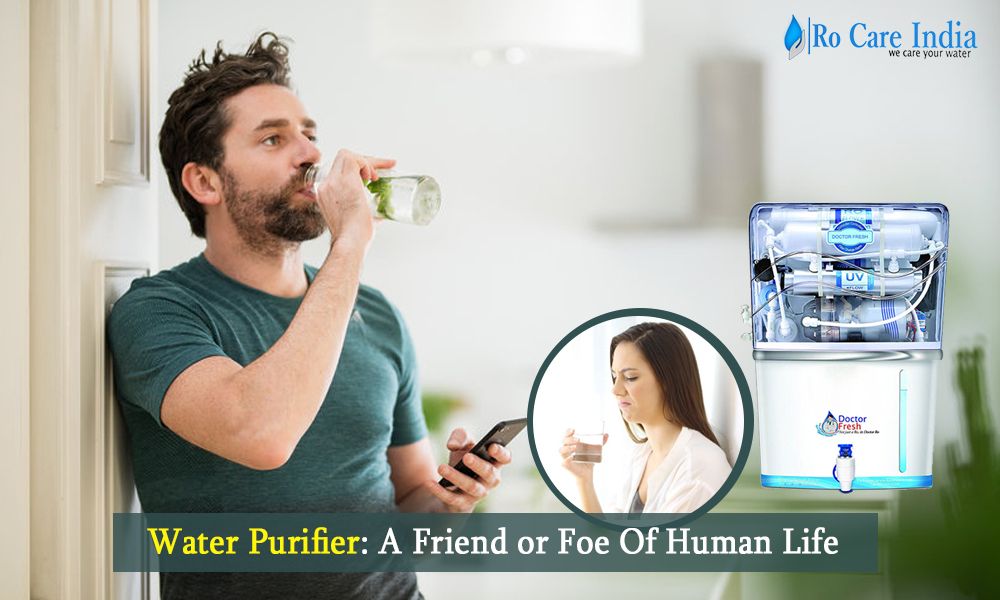Water purification is a process by which undesired chemical compounds, organic and inorganic materials, and biological pollutants are removed from the water. One prime purpose of water purification is to provide clean drinking water.

Water purification also meets the needs of medical, pharmacological, chemical, and industrial claims for clean and potable water.
The purification exercise moderates the concentration of contaminants such as adjourned particles, parasites, bacteria, algae, viruses, and fungi.
In modern times, the quality of water that must be purified is typically set by government agencies. Since it is infuriating to inspect water based on appearance, numerous processes, such as physical, chemical, or biological analyses, have been industrialized to test contamination levels. Level of organic and inorganic chemicals, such as chloride, copper, manganese, sulfates, and zinc, microbial pathogens, radioactive materials, and dissolved and suspended solids, as well as pH, odor, color, and taste, are some typical constraints analyzed to assess water quality and contamination heights.
General household methods such as boiling water or using an activated carbon filter can remove some water impurities, but these process does not remove more dangerous contaminants. For the treatment from harmful pollutants, “water purifiers” are taken into account.
Various minerals are found naturally in water and are significant for the human body, but an intense amount of it can cause multiple diseases. A good water purifier eliminates the excess salts, suspended elements, and microbes, and holds its essential vitamins and minerals. With so many manufacturers in the water purification industry these days, it is difficult to know which is good, which isn’t and which meets the essential standards.
Things You Need To Know About Water Purifiers
Water purifiers comprise different types of filters to make the water contaminant free. Thus water purification plant ensure that you will drink healthy water all around the year.
Reverse Osmosis filters (RO)
Reverse Osmosis (RO) system provides a multi-stage filtration of water by uniting active charcoal and also particle filtration. Here, the tap water is conceded through a membrane that has minute-sized pores, and this sweep out minerals and micro-organisms in water. The pollutants collected are then flushed out through an outlet pipe. An RO water purifier advances the taste of water. RO filters are suggested for places where the problem with the water is its high content of dissolved minerals.
Ultra Violet filters (UV)
UV light (low-level radiation) is passed on the water to destroy bacteria and other microbes by attacking the DNA in cells. These filters eradicate pesticides up to 98%. This filter is operative in removing all types of pathogens but is not effective for eliminating chemicals, taste, suspended particles, color, or smell.
Bio-sand filter
It has a concrete or plastic box that is occupied with layers of sand and gravel, which eradicates pathogens (micro-organisms in water) and suspended solids from polluted water.
Water is discharged into the top of the filter and collected in a safe storage container. Bacteria and other micro-organisms breed in the topmost layer of sand, which is called the bio-layer. The micro-organisms at the bio-layer eat away the pathogens in the water, thereby improving the water quality.
Ion exchange resin filters
Water is passed through resins that soften water by gripping the minerals present. These filters can soften the water by absorbing the salts present and can also entirely de-mineralize the water.
These are deep cylinders that are generally made from mud mixed with a flammable material like sawdust or coffee husks.
These drain out bacteria in the water over the small-sized pores in them. It removes chlorine and E.coli bacteria up to 99%. Its safe storage capacity prevents water to get contaminated again.
What to look before buying a water purifier
1. Is the industrial RO plant is accredited by a prominent institution such as NSF, WQA, and FDA?
2. How regularly the sediment filter/membrane needs to be cleaned or replaced?
3. What is the warranty on the components of the machine and how many free facilities does the firm offer?
4. If it is an RO purifier, what is the cleaning speed?
Which One To Buy?
There are numerous RO plant manufacturer in the market like – Tata Swach, Eureka Forbes, Kent, Pureit, etc. Each of these products varies in cost, type of filter they use and the method of purification. Most water purifiers today combine two-three techniques.
For instance, Eureka Forbes’ Aquaguard Protect Plus combines the advantages of a Reverse Osmosis purifier and Ultra Violet sterilization. The innovative model of water purifiers that offer a mixture of technologies will cost anywhere between Rs 8500 and Rs 16000.
Water purifiers have become an essential part of every kitchen now, and manufacturers of these products are challenging to garner market share. The advantage for a shopper here is that she/he can expect decent discounts in these products, especially when purchasing during a festive season.
To read more on topics like this, check out the health category.
Leave a Reply